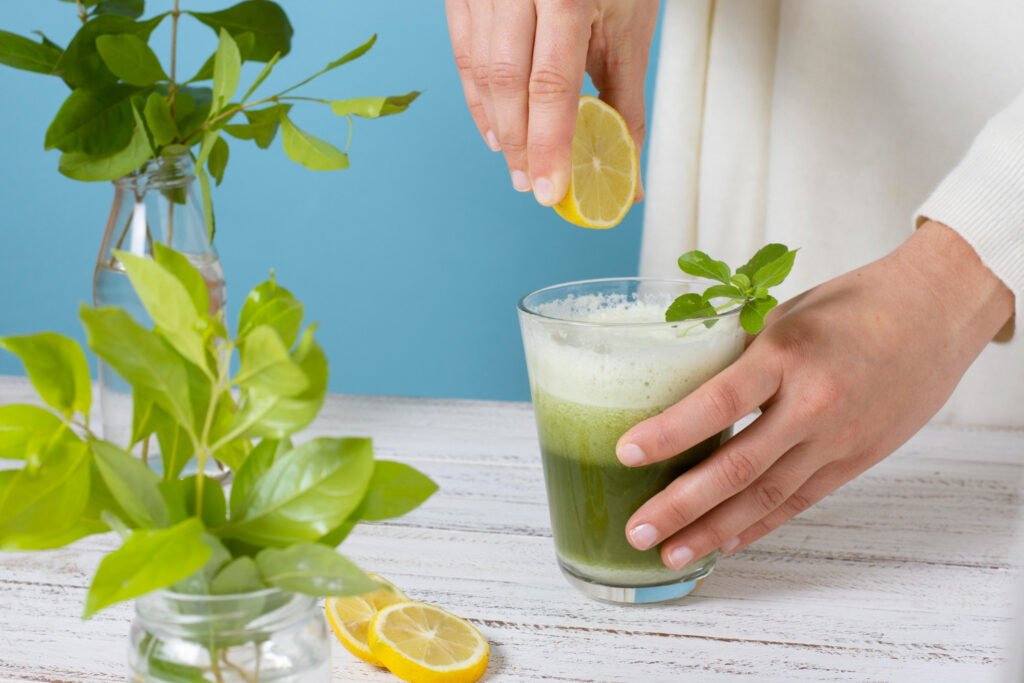
In this article
overview
Imagine easing pain without reaching for a pill bottle. The secret might be in your kitchen! Certain foods boast powerful properties that can reduce inflammation and alleviate pain naturally. From ancient spices to vibrant fruits, let’s explore these nutritional powerhouses that can make pain more manageable and improve your overall well-being.
Why Food Matters in Pain Management
Inflammation is a double-edged sword. It’s essential for healing, but chronic inflammation can lead to ongoing pain and health issues like rheumatoid arthritis (RA), Crohn’s disease, and other autoimmune disorders. Managing inflammation through diet is a proactive way to reduce discomfort and enhance quality of life. Instead of relying solely on medication, incorporating anti-inflammatory foods can provide a natural, effective complement to traditional treatments.
1. Ginger: The Soothing Root
Ginger, a staple in traditional medicine, is renowned for its stomach-soothing and anti-nausea properties. Recent studies suggest that ginger can also help relieve menstrual cramps. Its anti-inflammatory compounds, such as gingerols, work to reduce pain and inflammation. Try adding fresh ginger to your tea, smoothies, or dishes for a flavorful and health-boosting twist.
2. Blueberries: Tiny Berries with Big Benefits
Blueberries are packed with phytonutrients that fight inflammation and pain. These little berries, whether fresh or frozen, are rich in antioxidants and polyphenols. Consuming them can help reduce pain and support overall health. Similar benefits can be found in strawberries and oranges, which also contain high levels of antioxidants. Add a handful of blueberries to your breakfast cereal, yogurt, or smoothies to harness their pain-relieving properties.
3. Pumpkin Seeds: Magnesium-Rich Marvels
Pumpkin seeds, or pepitas, are an excellent source of magnesium, a mineral known for its role in reducing migraine frequency and preventing osteoporosis. While they might not stop nocturnal leg cramps, pumpkin seeds can still be a valuable addition to your diet. Other magnesium-rich foods include almonds, cashews, dark green leafy vegetables, beans, and lentils. Sprinkle pumpkin seeds on salads or enjoy them as a snack.
4. Salmon: Omega-3 Powerhouse
Salmon is celebrated for its high content of anti-inflammatory omega-3 fatty acids, which are beneficial for heart health and joint pain relief, particularly in rheumatoid arthritis patients. Other cold-water fish like tuna, sardines, and mackerel also provide similar benefits. However, it’s best to avoid tilapia and catfish, as they have higher levels of omega-6 fatty acids, which can promote inflammation. Incorporate salmon into your meals at least twice a week for optimal benefits.
5. Turmeric: The Golden Spice
Turmeric, with its vibrant orange-yellow hue, is a culinary and medicinal star. Its active compound, curcumin, is known for powerful anti-inflammatory and antioxidant effects. Studies have shown that curcumin supplements can improve mobility and reduce pain in people with rheumatoid arthritis and osteoarthritis. To enhance absorption, pair turmeric with black pepper. Enjoy turmeric in curries, soups, or as a tea with ginger and honey for a soothing drink.
6. Tart Cherries: Nature’s Pain Relievers
Tart cherries and their juice are known for reducing muscle pain and inflammation, particularly in athletes. The antioxidants and anti-inflammatory compounds in tart cherries can help alleviate discomfort from osteoarthritis. Drink tart cherry juice or add the fruit to your diet for a natural pain relief boost.
7. Extra Virgin Olive Oil: Liquid Gold
Extra virgin olive oil (EVOO) contains oleocanthal, a compound with anti-inflammatory properties similar to ibuprofen. EVOO also has lubricin, a protein that protects cartilage. Use EVOO in your cooking, but keep temperatures below 410 degrees Fahrenheit to preserve its benefits. Drizzle it on salads or use it as a base for dressings and marinades.
8. Chili Peppers: Spicy Pain Killers
Capsaicin, the compound that gives chili peppers their heat, is well-known for its pain-relieving properties in topical creams and patches. Emerging research suggests that consuming chili peppers might also help reduce inflammation. The heat from chilies triggers the release of endorphins, which are natural pain blockers. Incorporate chilies into your meals to benefit from their pain-killing properties.
9. Mint: A Refreshing Relief
Peppermint oil is effective in relieving cramps, gas, and bloating associated with irritable bowel syndrome (IBS). Peppermint tea is a soothing option for occasional stomach discomfort. Early research indicates that Brazilian mint tea might be as effective as some prescription painkillers. Enjoy a cup of peppermint tea after meals for digestive comfort.
Foods to Avoid for Pain Relief
While adding anti-inflammatory foods to your diet is crucial, it’s equally important to avoid foods that can exacerbate inflammation. High sugar intake can increase pro-inflammatory compounds and elevate inflammatory markers like C-reactive protein. Opt for nutrient-dense, fibrous carbohydrates over refined options. Additionally, reducing sodium intake can help prevent water retention and joint pain.
The Takeaway
Managing pain through diet is a natural and effective strategy. Incorporating anti-inflammatory foods like ginger, blueberries, pumpkin seeds, salmon, turmeric, tart cherries, extra virgin olive oil, chili peppers, and mint can significantly reduce pain and improve overall health. By making mindful dietary choices, you can support your body’s natural healing processes and enhance your quality of life.
Start exploring these natural pain relievers today and experience the benefits of a pain-reducing diet. Share this knowledge with friends and family, and take the first step toward a healthier, pain-free life
A Quick Review
Discover the power of natural pain relief through your diet. This article highlights foods rich in anti-inflammatory properties that can help manage chronic pain and inflammation, offering a natural alternative to medications. From ginger to mint, learn how these nutritional powerhouses can alleviate discomfort and enhance your overall well-being
Frequently asked questionsay
What foods help reduce inflammation and pain?
Foods like ginger, blueberries, pumpkin seeds, salmon, turmeric, tart cherries, extra virgin olive oil, chili peppers, and mint are known for their anti-inflammatory properties, which can help reduce pain.
How does turmeric help with pain relief?
Turmeric contains curcumin, a compound with powerful anti-inflammatory and antioxidant effects. It can reduce pain and improve mobility in conditions like rheumatoid arthritis and osteoarthritis.
How can peppermint oil help with pain?
Peppermint oil can relieve cramps, gas, and bloating associated with irritable bowel syndrome. Peppermint tea is also effective for occasional stomach discomfort.
Why should I avoid certain foods to manage pain?
Foods high in added sugars, refined carbs, and excessive sodium can exacerbate inflammation, leading to increased pain and discomfort.











